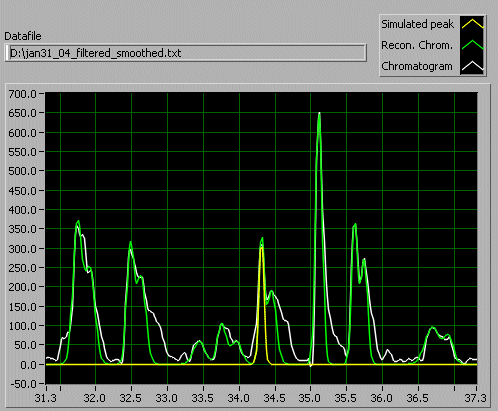This program was written to compute the peak capacity of chromatographic separations. The peak capacity is defined as the number of compounds that can be separated with baseline resolution in a given separation space (i.e. time). The easiest way to compute peak capacity is to fit all of the peaks in a chromatogram with a Gaussian peak, then compute the median peak width of each peak (widthbase = 4*sigma), and divide the separation space (time) by the median peak width.
The Peak Finder program uses the LabView Peak Fit routine to fit the peaks of a chromatogram with a polynomial fit, returning the peak amplitude and width. A model Gaussian peak is then computed and displayed for each peak. The user can step through the program and examine the fit for each peak, modifying the peak width and elution time for each peak so that the Gaussian peak best represents the actual peak. Peaks that the program found but are not real peaks can be excluded from the peak list and thus all subsequent calculations.
The first picture below illustrates the display of a Gaussian peak (in yellow) overlaid on the actual chromatogram. The table at the bottom left shows the retention time (34.31 minutes), peak width (8.93 seconds), and peak area (1728.69 sec-counts). The user has the option of determinining that any peak is a poor match and may manually excluded it. The Peak Capacity, median, minimum, and maximum peak widths are shown at the bottom right.


